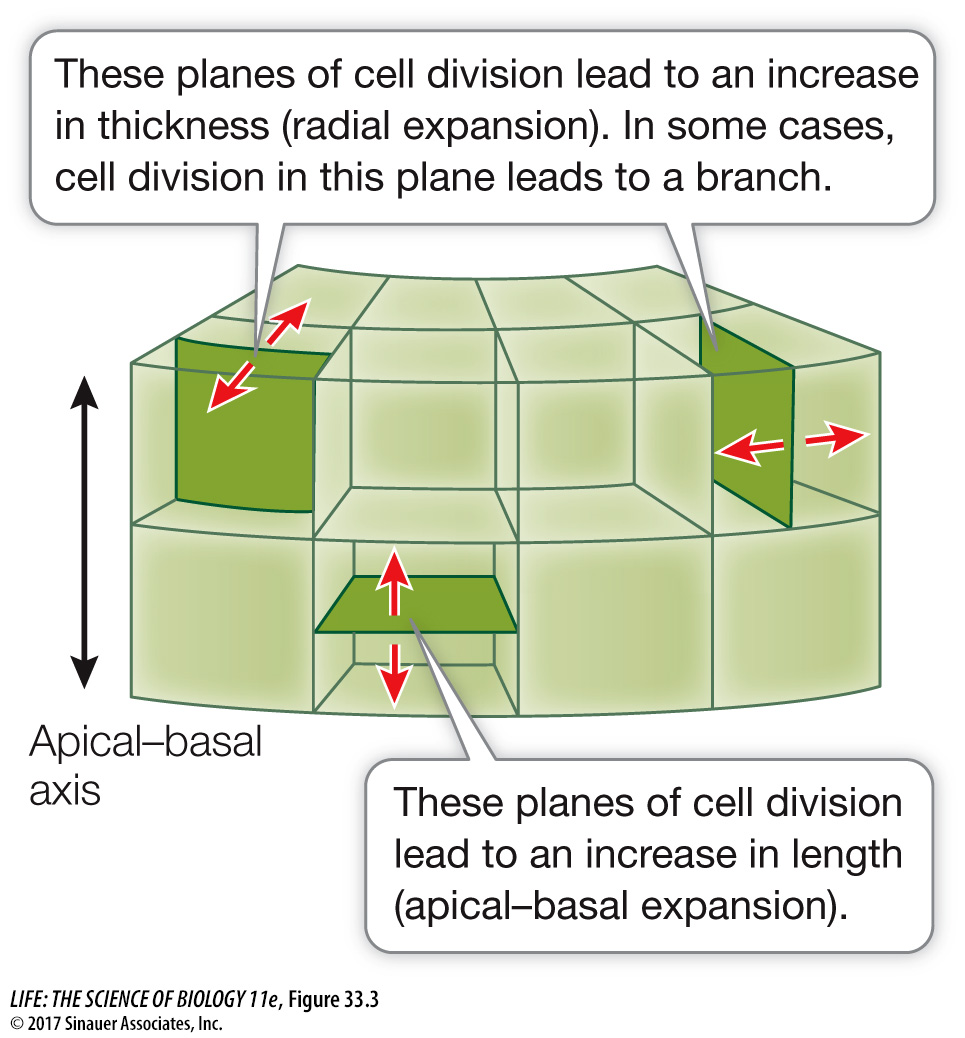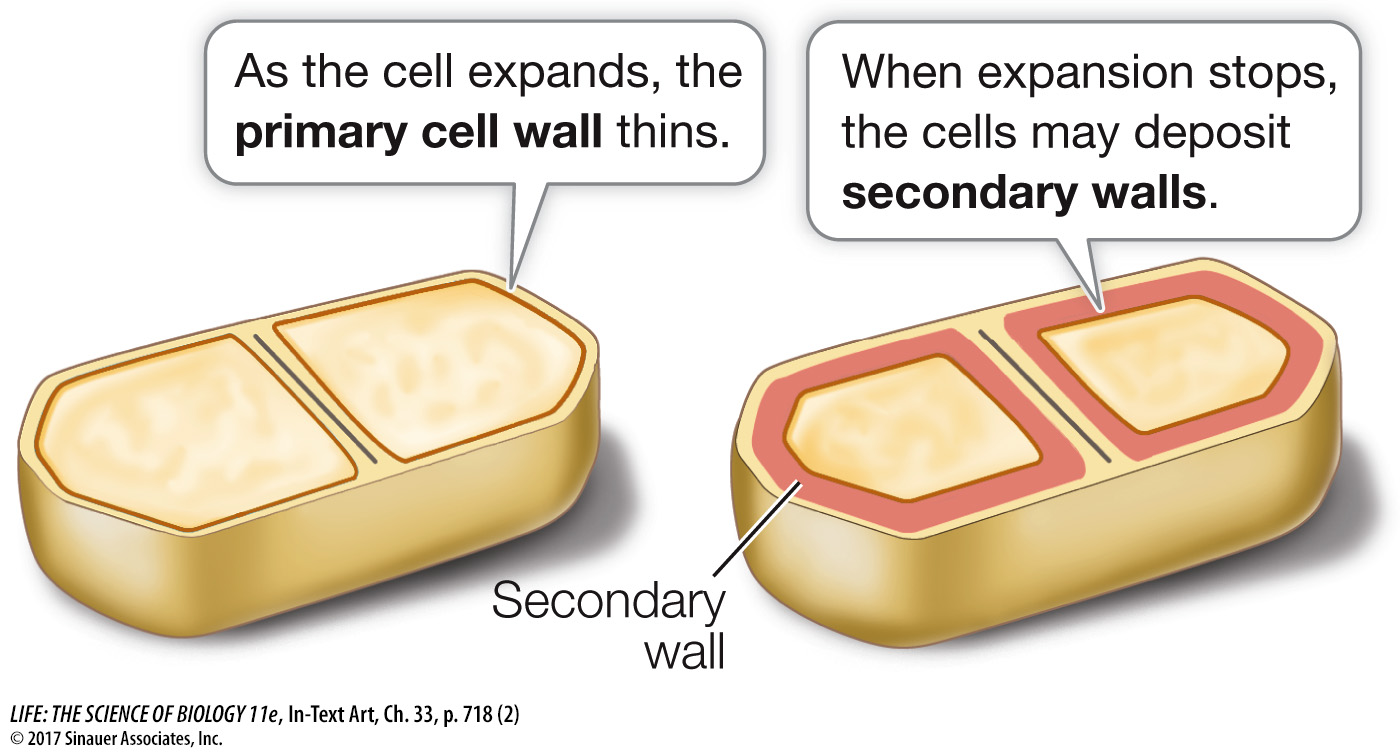Plants develop differently than animals
Chapter 19 described four processes that govern development in all multicellular organisms: determination (the commitment of cells to their ultimate fates), differentiation (cell specialization), morphogenesis (the organization of cells into tissues and organs), and growth (increase in body size). In plants, these processes are influenced by four features: apical meristems, totipotency, vacuoles, and cell walls.
717
MERISTEMS Animals have stem cells to replace tissues lost through damage or apoptosis. Hundreds of millions of new cells are produced every day in the human body just to maintain itself. Plants, too, experience losses, both from herbivory and programmed events (such as leaf drop in the fall). Plant tissues and organs are generated in plant meristems: regions of undifferentiated cells where cell division occurs. Apical meristems are found at the tips of shoots and roots and allow plants to continue growing throughout their lives.
TOTIPOTENCY During normal animal development, only the early embryonic cells are *totipotent: they can differentiate into any type of cell in the body. In contrast, some differentiated plant cells can dedifferentiate and become totipotent. This means that a plant can readily repair damage wrought by the environment or herbivores.
*connect the concepts Key Concept 19.1 describes distinctive aspects and functions of totipotency in plants.
VACUOLES Mature plant cells usually contain a single central vacuole, which may account for up to 90 percent of a cell’s volume (see Figure 5.13). The vacuole is a watery sac containing solutes, including enzymes, amino acids, and sugars produced by photosynthesis. Many of these solutes are pumped into the vacuole by transporter proteins located in the tonoplast, the vacuolar membrane. This active accumulation of solutes provides the osmotic force for water uptake into the vacuole, as we will explain in Key Concept 34.1. As the vacuole expands, it exerts turgor pressure on the cell wall. Turgor pressure keeps plants upright and is essential for plant growth (see Chapter 6).
CELL WALLS Each plant cell is surrounded by a cell wall, which is interrupted by membrane-

Question
Q: How do you think the plane of cell division is controlled?
The plane of cell division is controlled by two factors: the deposit of cell wall material by the Golgi apparatus and the orientation of microtubules that in turn orient cellulose microfibrils.
718
One of the major ways that plants grow is by cell expansion. Some cells can increase in volume by 100,000 to 1,000,000 times! As a growing plant cell takes up water, it exerts turgor pressure on the cell wall, which resists cell expansion. For the cell to expand, the wall must expand too. Proteins appropriately called expansins reside in the cell wall and help loosen it by disrupting the noncovalent interactions between cellulose microfibrils and other polysaccharides in the cell wall. This is followed by the assembly of new polysaccharides and microfibrils, allowing the cell wall to grow:

The wall of a growing plant cell is called the primary cell wall. When cell expansion stops, some types of plant cells deposit one or more additional cellulosic layers to form a thick, rigid secondary cell wall that is internal to the primary cell wall:

Secondary cell walls cannot expand. Instead they provide the mechanical support that allows some plants to produce large stems. The secondary wall contains layers of ordered cellulose microfibrils embedded in a remarkable substance called lignin. Lignin is a major component of wood; it is a complex, carbon-